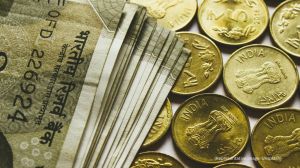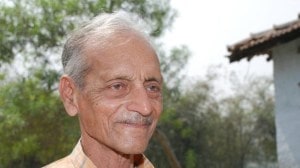AFTER WE ARE GONE
What would a world that has no human beings on it be like? Would Planet Earth then die out or would it regain its natural health?

The second coming may be the most widely anticipated apocalypse ever, but it’s far from the only version of the end times. Environmentalists have their own eschatology—a vision of a world not consumed by holy fire but returned to ecological balance by the removal of the most disruptive species in history. That, of course, would be us, the six billion furiously metabolising and reproducing human beings.
There’s even a group trying to bring it about, the Voluntary Human Extinction Movement, whose website calls on people to stop having children altogether. Now journalist Alan Weisman has produced, if not a bible, at least a Book of Revelation, The World Without Us, which conjures up a future something like … well, like the area around Chernobyl, the Russian nuclear reactor that blew off a cloud of radioactive steam in 1986. In a radius of 30 km, there are no human settlements—just forests that have begun reclaiming fields and towns, home to birds, deer, boar and moose.
Weisman’s intriguing thought experiment is to ask what would happen if the rest of the Earth was similarly evacuated—not by a nuclear holocaust or natural disaster, but by whisking people off in spaceships, or killing them with a virus that spares the rest of the biosphere. In a world with no one to put out fires, repair dams or plow fields, what would become of the immense infrastructure humans have woven across the globe? In a matter of days or weeks, nuclear power plants would boil off their water and melt into vast radioactive lumps. Electrical power would fail, and with it the pumps keeping city subways from flooding; Lexington Avenue in New York would collapse and eventually turn into a river. Lightning-caused fires would blow out the windows in skyscrapers, and concrete floors would freeze and buckle.
A few centuries on, steel bridges would fall victim to rust and the inexorable assault of vegetation taking root in clumps of soot. Masonry structures would last the longest, although the next ice age would wipe them out, and bronze sculpture, Weisman estimates, would still be recognisable 10 million years into the future, probably the last recognisable artifacts of our civilisation.
And what of the biosphere? Unless global warming has already progressed beyond the point of no return, it would eventually recover much of its diversity and richness. Contrary to widespread belief, cockroaches would not take over the world if there were no one around to step on them: tropical insects, they wouldn’t survive their first winter without central heating. Rats and dogs would miss us the most, it seems — the former for our garbage and the latter our protection from bigger predators. Feral cats, on the other hand, would do quite well: there would be plenty of birds for them to eat. Elephants would once again have the run of Africa, and the oceans would be filled with fish as few alive have ever seen them.
Sound appealing? Well, it did to Weisman, too, when he began work on the book four years ago. And “four out of five” of the people he’s told about it, he estimates, thought the idea sounded wonderful. Since we’re headed inexorably toward an environmental crash, why not get it over cleanly and allow the world to heal?
Over time, though, Weisman’s attitude toward the rest of humanity softened, as he thought of some of the beautiful things human beings have accomplished, their architecture and poetry, and he eventually arrived at what he views as a compromise: a worldwide, voluntary agreement to limit each couple to one child.
This, says Weisman—who is 60, and childless after the death of his only daughter—would stabilise the human population by the century end at 1.6 billion, approximately where it was in 1900. And then, perhaps, more of the world could resemble Varosha, the beach resort in Cyprus in the no man’s land between the Greek and Turkish zones, where, Weisman writes, thickets of hibiscus, oleander and passion lilac grow wild and houses disappear under mounds of bougainvillea.
Too bad there’s no one there to see it.
-JERRY ADLER (Newsweek)





- 01
- 02
- 03
- 04
- 05


























